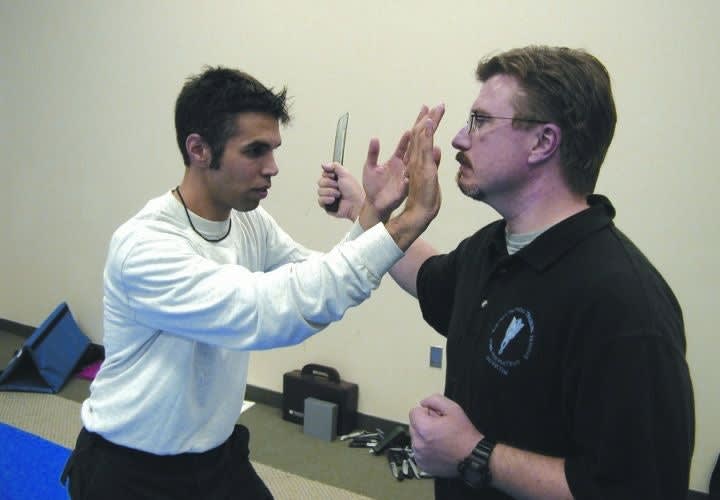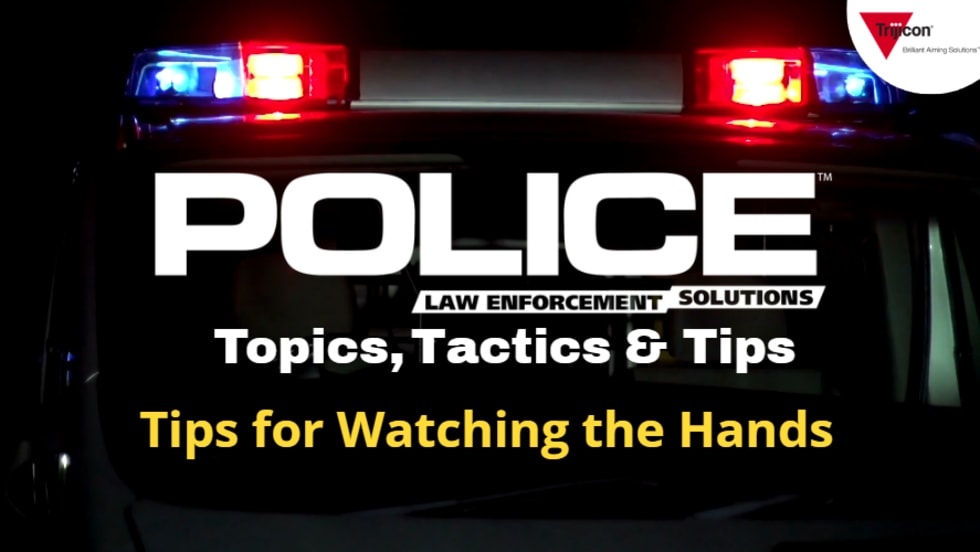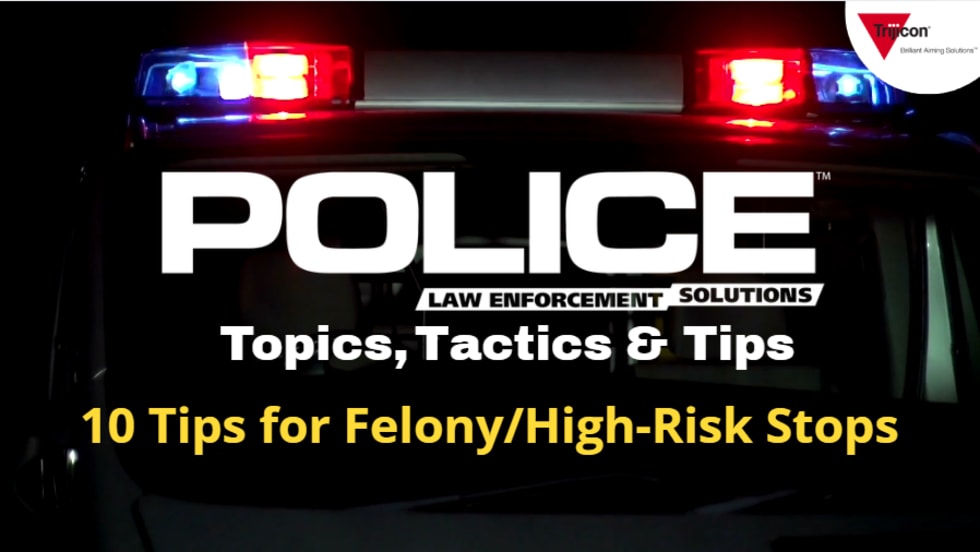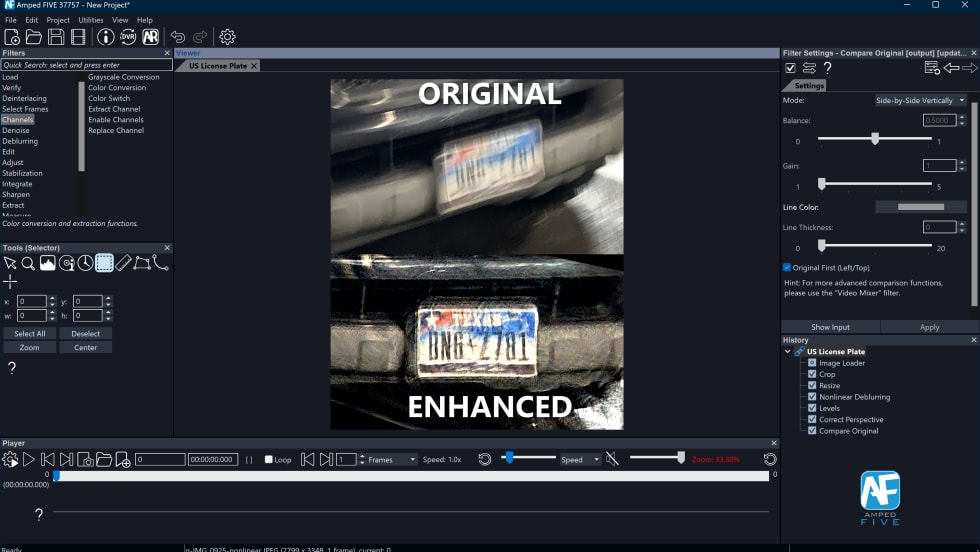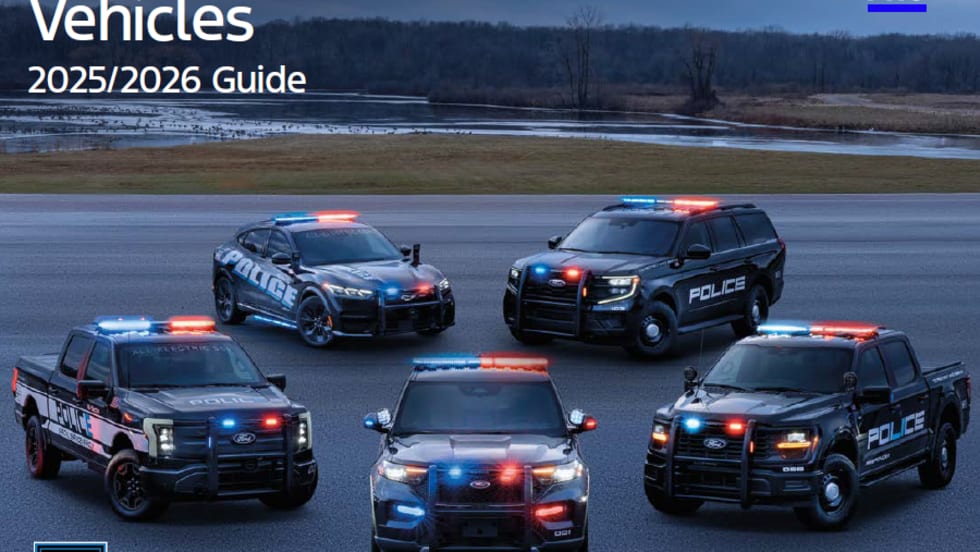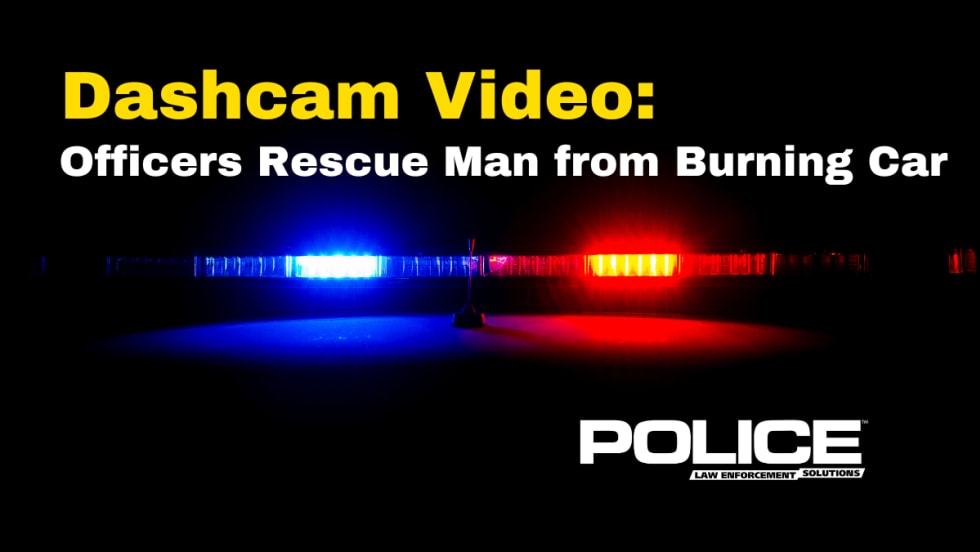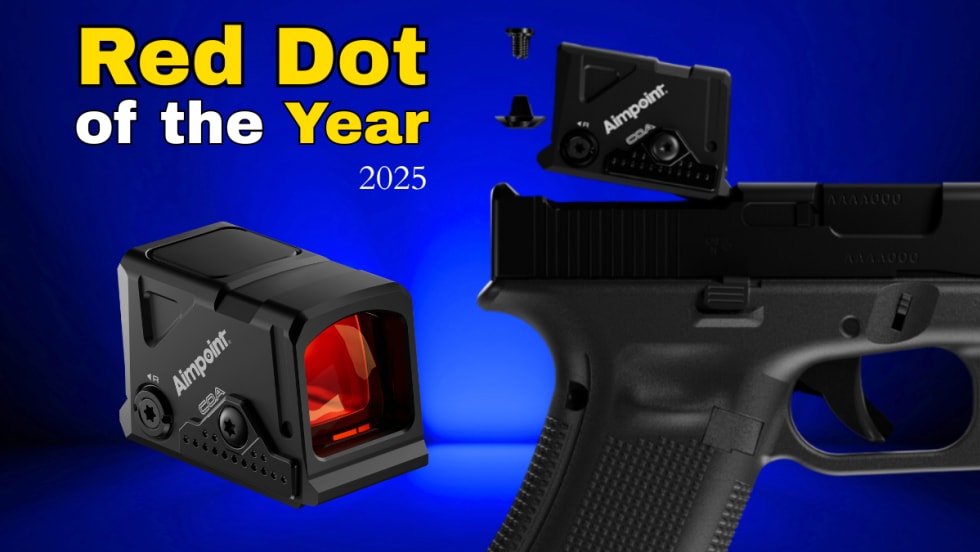Be Ready
To respond to an edged-weapon attack, you have to be ready for one. If you treat all attacks as a possible edged-weapon attack this will give you a key advantage.
Often when an officer is stabbed, he or she does not see the blade. So it’s quite common for a wounded officer to think an assailant is punching him until he realizes that he’s been stabbed. The reason for this is simple; many edged-weapon attacks on officers involve tools that are small enough not to be seen in the attacker’s hand, especially at night or under low-light conditions.
Don’t forget that you are fighting a person and not the weapon. Fight your assailant or assailants, not the knife. If you break down the person holding the knife so that he or she can’t function, then that attacker and his or her weapon are no longer a threat to you or anyone else.
Remember, people holding weapons always feel that they are superior over someone without a weapon. The same goes for a group of assailants facing one person or a smaller group. This is their security blanket; you need to take it away from them. And you can do this by injuring them and breaking them down.
Knife attacks are not pretty. No matter how adept you are with hand-to-hand combat, you are likely to get cut. To win, you have to get past this.
Visualizing being cut in training will help you prepare for the reality of a knife attack. Remember, one knife wound is usually not fatal. Multiple knife wounds usually are. The lesson here is to keep fighting even after you’ve been cut.
Use your training to conquer your fear. Managing fear and stress is critical in a knife attack. Channel your fear as inspiration and don’t let it debilitate you. In physical combat, the worst mistakes are made out of fear, which results from improper training.
Block and Strike
Being attacked by an edged weapon is no different than being attacked empty handed. If the attacker jabs, you block and strike at the same time.
Too many people make the mistake of fencing or boxing with a knife fighter. Movement is sometimes your best defense. It’s hard to stab a moving target, and your movement may lead to mistakes by your attacker.
[PAGEBREAK]
There should be no difference in your defensive tactics except in your mindset that the stakes are now higher. This should make you even more focused and determined to win.
An effective unarmed response against an armed attacker must be simple, easy to remember, and easy to repeat. In the movies, you’ll see martial artists make all kinds of fancy moves to counter an edged-weapon attack. Forget that stuff. Remember, the martial artist in a movie wants to look cool. You, in contrast, want to stop an attack that could end your life.
This is why I advocate techniques that involve simple moves that can be applied in multiple situations. For example, the same move that blocks a wide knife slash or a straight thrust works against punches and other weapons. It can also be used standing or on the ground.
Look at the photo at the top of this article. The photo is static, and it doesn’t do justice to the real movements at real speed, but static photos will show you what to do better than full-speed photos.
The photo shows the man in white (the author) defending and attacking at the same time. This is the main philosophy of Wing Chun Kung Fu, which is the basis of my specialty, Bo Fung Do. Even if it’s a quick jab, you defend and attack at the same time with a palm strike, a finger jab, a kick, anything other than a closed-fist punch.
You don’t punch because your fist is weaker than your opponent’s head, and you’re not wearing wraps and big gloves. If you’re primarily a puncher, start trying to break that habit by switching to palm strikes. If you’re not sold, try this exercise. Go palm strike a wall. Now, punch it with your fist. On second thought, don’t. You may break your hand. Get the concept?
You can practice the Bo Fung Do block-and-strike move on your own or with a partner and from either side. Here’s how you do it. Stand square and step forward into the move, first left leg with left arm blocking and right striking, then left leg again with right arm blocking and left striking. Repeat this sequence while stepping with your right leg. Then practice with your left leg forward while stepping with your right and vice versa. Make sure your steps are comfortable and not too wide. And be sure to practice on uneven and slippery ground. As a cop, you can’t choose where you will be attacked.
It’s important that you visualize the attack while you practice solo. And remember, the moves don’t have to be exact as long as the concepts remain the same.
Bo Fung Do works because if you practice attacking and defending at the same time, you automatically train your response to be offensive and not defensive, active instead of reactive. Even if you’re caught by surprise this is your reaction: One hand defends, the other attacks your opponent’s face. Always move into the attack and not away from it.
Yes, escape is sometimes your best option. However, the only way you can safely move away from a knife attack is to put an obstacle or some kind of barrier between yourself and your assailant while accessing your firearm. This can be a parked car, a mailbox, or anything else that can’t be moved and the assailant has to move around.
You react under stress the way you train. There are no rules in the street. You can finger jab. You can rip and tear the body. You can break joints. Your mindset and your training need to reflect this.
Training in empty-hand defensive tactics teaches you how to relax under stress and not to rely on any security blankets. It shows you how to rely on you and you only. Always remember, your survival begins and ends with you.
Alfred Giusto is president of Portland, Maine-based Bo Fung Do Tactics (
www.bfdtactics.com
). He instructs officers in unarmed combat and has conducted classes at TREXPO.
Keep It Real
Your training should reflect the reality of your work in the street.
That means you should train in street or duty clothes including shoes or boots. Your training area should have mats that allow you to do this.
Also, when possible do some training outside and not just in ideal conditions. Train in cold weather, rainy weather, and icy weather or simulate as best you can. You should train blindfolded, with restrictions on body parts to simulate injuries, in cars, tight spaces, stairs, sitting down, standing, or on the ground. You should learn how to fall and roll safely and then be able to do it on concrete.


